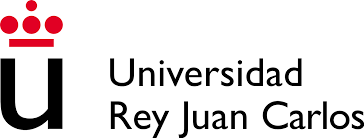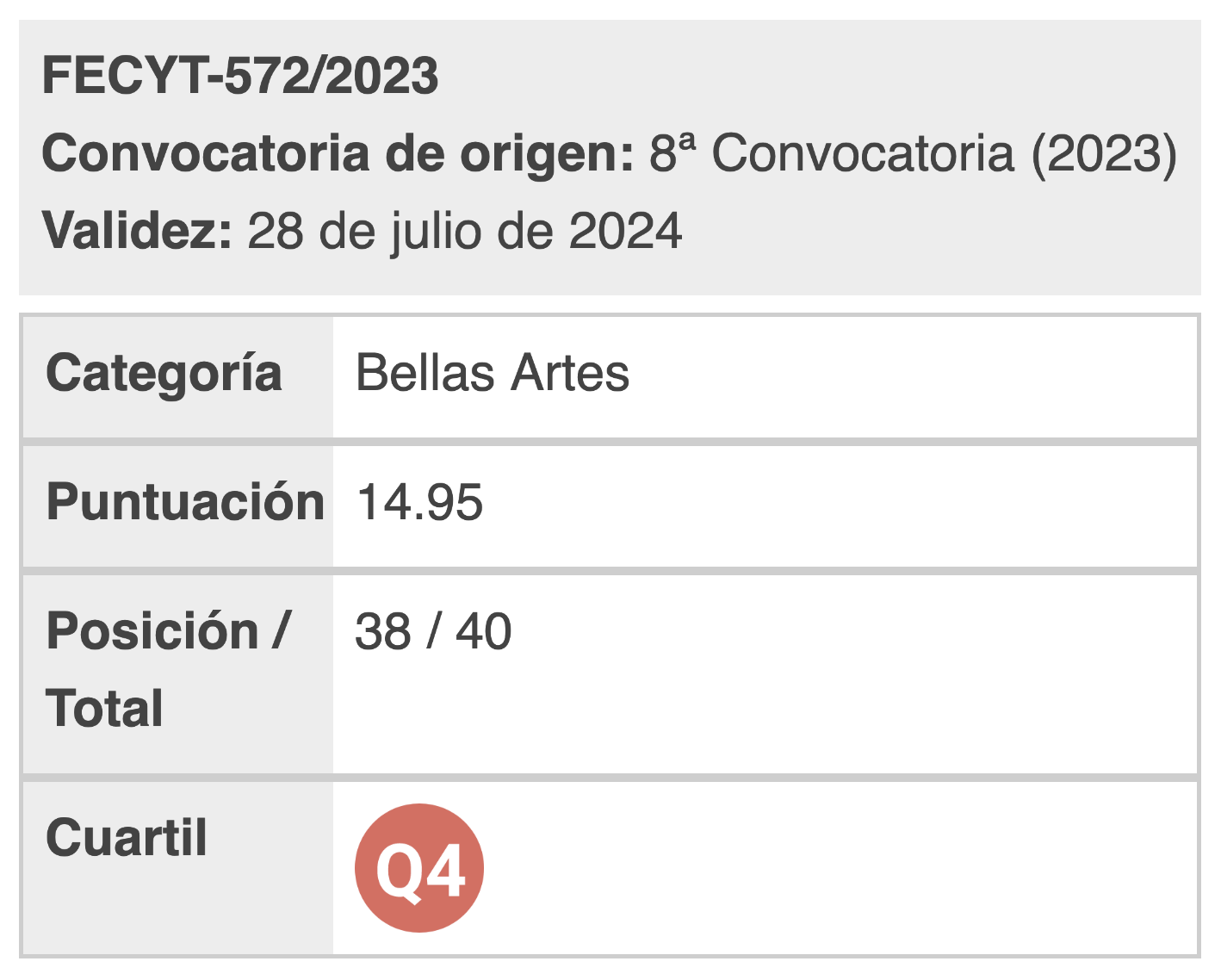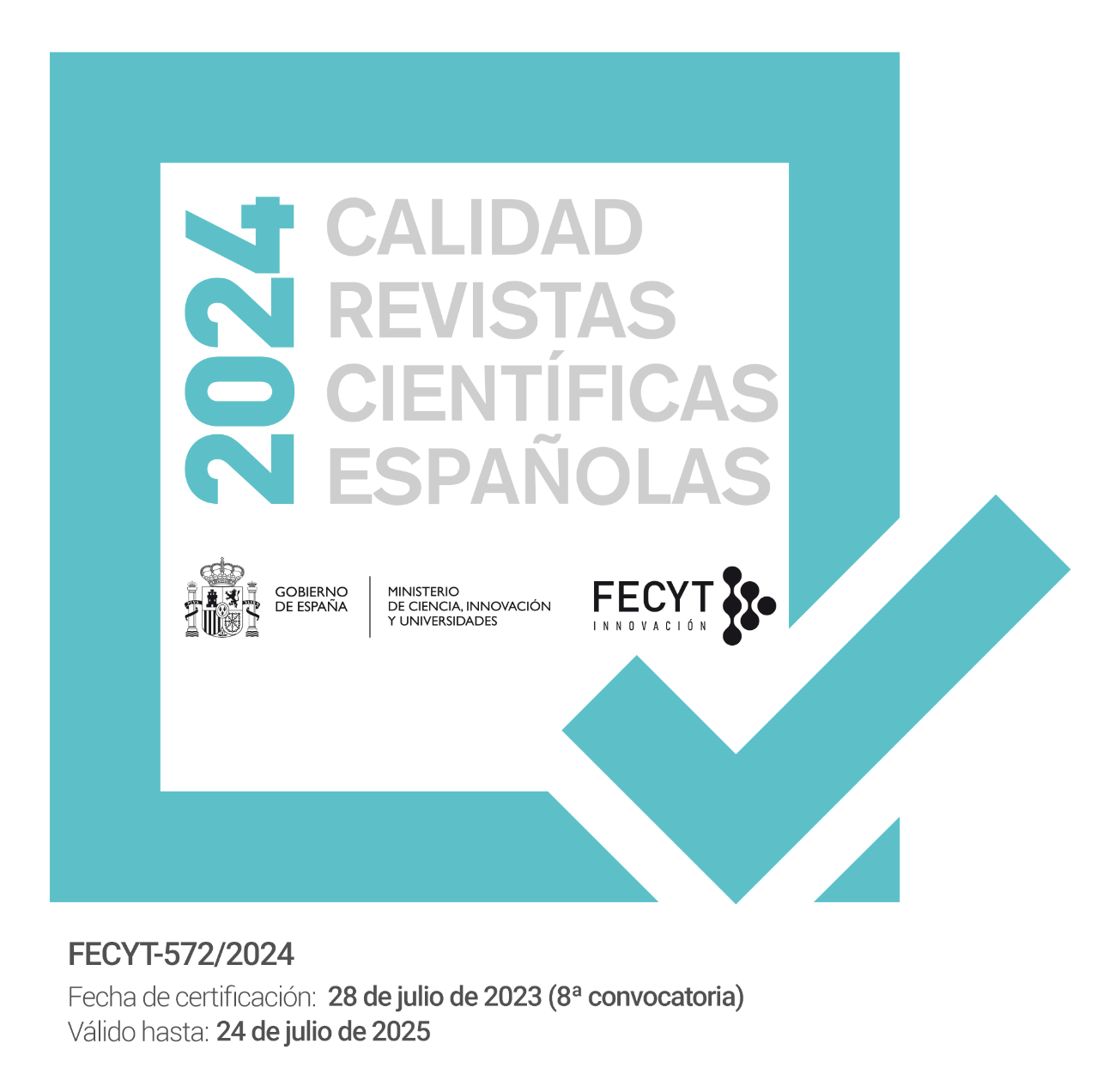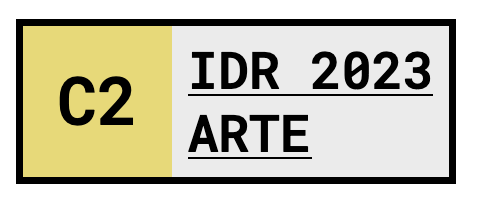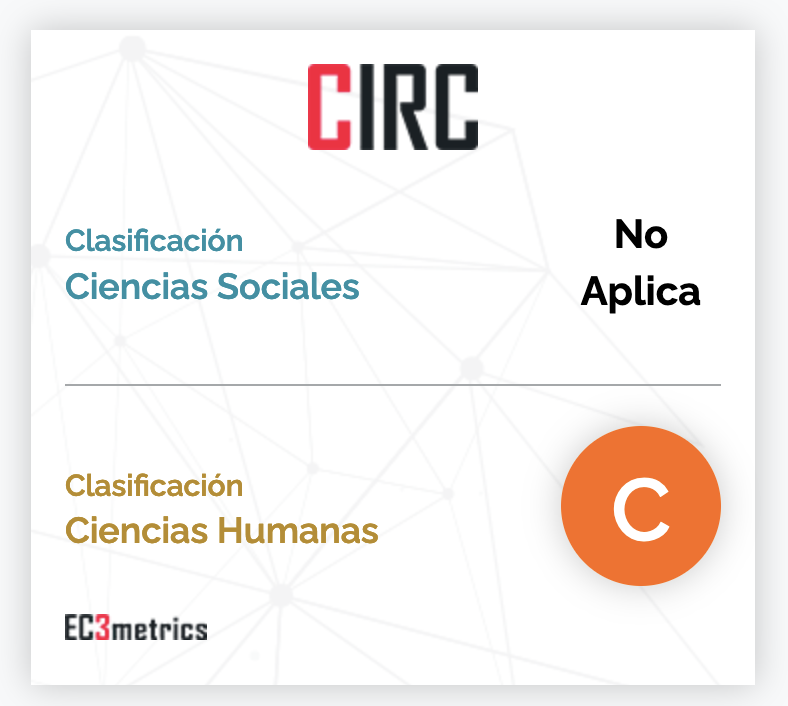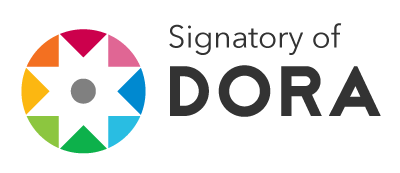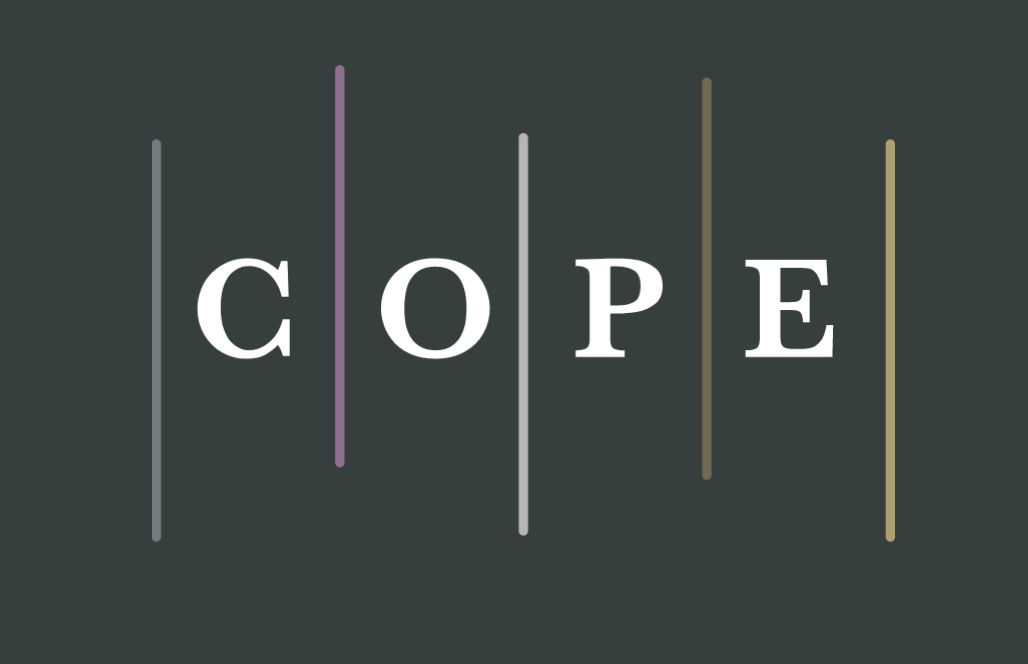POSTDIGITAL RECYCLING IN THE WORK OF ALMUDENA LOBERA, MARIO SANTAMARÍA Y ROMÁN TORRE
DOI:
https://doi.org/10.33732/ASRI.6531Keywords:
Postdigital Recycling, transcodification, technological reappropriation, artistic hacktivism, phygitalAbstract
This article is the result of research on postdigital recycling in the context of contemporary artistic practices and aims to highlight the applicability of this term and identify some of its compositional strategies in relation to the works of three contemporary Spanish artists (Almudena Lobera, Mario Santamaría, Roman Torre). In the first section, the characteristics of postdigital recycling in contemporary artistic practices will be addressed, to later deepen the definition of the strategies of transcodification, technological reappropriation and artistic hacktivisim, and, finally, some works of these three Spanish artists will be analysed, exploring how they question the public through the construction of objects, installations and mechanisms that make visible and subvert our habits of technological consumption. We will observe how they make use of the fluid interpenetration of the different exhibition spaces, both analogue and digital, as well as the exploration of their interstices, creating hybrid (phygital) objects that conflict with the traditional notions associated with each medium and propose to the public new interfaces that reveal what we have made invisible in our hybridization with the machine.References
Alexenberg, M. (2014). The Future of Art in a Postdigital Age, From Hellenistic to Hebraic Consciousness. Intellect Books.
Berry, David M. y Michael Dieter. (2015). Postdigital Aesthetics. Art, Computation and
Design, Palgrave MacMillan.
Bolter, Jay David, y Richard Grusin. ([1999] 2000). Remediation: Understanding New Media. MIT Press.
Bourriaud, Nicolas. (2007). Postproduccion. La cultura como escenario: modos en que el arte reprograma el mundo contemporáneo. Adriana Hidalgo Editora.
Capurro, Rafael. (2011). Contribución a una ontología digital, en Jaimir Conte y Oscar Federico Bauchwitz (Eds.): O que é metafísica? Atas do III Colóquio Internacional de Metafísica. EDUFRN, 321-337. http://www.capurro.de/ontologiadigital.html
Cascone, K. (2000). The Aesthetics of Failure: ‘Post-Digital’ Tendencies in Contemporary Computer Music. Computer Music Journal, 24, 4 (Winter). MIT Press: 12-18. https://doi.org/10.1162/014892600559489
Centro Cultural de España en México. (2021). Stories: Almudena Lobera. http://ccemx.org/evento/stories-almudena-lobera-es/
Coyne, R. (1999). Technoromanticism: Digital Narrative, Holism, and the Romance of the Real. MIT Press.
Cramer, F. (2014). What is ‘Post-digital’? APRJA, 3, 1. https://doi.org/10.7146/aprja.v3i1.116068
Critical Art Ensemble. (2013). Acceptable Losses. http://critical-art.net/acceptable-losses-2013/.
Ercolani, Andrea and Lulli, Laura. (2022). Rethinking Orality I: Codification, Transcodification and Transmission of 'Cultural Messages'. De Gruyter. https://doi.org/10.1515/9783110751987
Goldsmith, K. (2015). Escritura no creativa. Gestionando el lenguaje en la era digital. Caja Negra. http://www.forma.forma-color.org/biblio/kenneth-goldsmith-escritura-no-creativa.pdf
Greene Naftali Gallery. (2021). Cory Arcangel. Century 21, folleto de exposición, 5 de marzo. https://greenenaftaligallery-viewingroom.exhibit-e.art/viewing-room/cory-arcangel#tab:thumbnails
Llamas, Miriam. (2022). Postdigital ahora, Serie Cuadernos del ahora, n.1, REC-LIT: Reciclajes culturales. Transliteraturas en la era postdigital. https://eprints.ucm.es/id/eprint/61054/13/Llamas%20Ubieto.%20Postdigital%20ahora_Cuadernos%20del%20ahora.pdf
Latrou, S. (2020). The Phygital Artifact. A Path of Hyperlinks toward a Hybrid Exploration. Tesis de Máster, Universidad Politécnica de Madrid.
Lobera, A. (2020). Technical Images. Tabacalera, La fragua, Madrid (07/02/2020-12/04/2020). https://tourmake.it/TechnicalImagesAlmudenaLobera
Lobera, A. (2020). Stories. Espacio CDMX. Ciudad de México (30/01/2020-29/03/2020). http://www.almudenalobera.com/
Lorde, A. (1984, 2007). The Master’s Tools Will Never Dismantle the Master’s House. En Sister Outsider. Crossing Press, p.110-113.
Lovink, Geert. (2017). Overcoming Internet Disillusionment: On the Principles of Meme Design, E-Flux Journal, Issue #83, June. https://www.e-flux.com/journal/83/141287/overcoming-internet-disillusionment-on-the-principles-of-meme-design/
Malraux, André. (2017). El Museo Imaginario. Cátedra.
Manovich, L. (2017). Los algoritmos de nuestras vidas. CIC. Cuadernos de Información y Comunicación, 22, 19-25. http://dx.doi.org/10.5209/CIYC.55960
Martín Prada, J. (2017). Sobre el arte ‘post-Internet’, Revista Aureus, núm. 3, junio, Universidad de Guanajuato.
McAndrew, John. (1955). The Non-Imaginary Museum. College Art Journal, Vol. 14, No. 2, Winter, 124-134. DOI: https://doi.org/10.2307/773022
Negroponte, N. (1998). Beyond Digital. Wired, December, Issue 6.12. https://www.wired.com/1998/12/negroponte-55/
Openshaw, J. (2015). Postdigital artisans: Craftmanship with a new aesthetic in fashion, art, design and architecture. Frame Publishers.
Raley, R. (2009). Tactical Media. University of Minnesota Press.
Rodríguez de las Eras, Antonio. (2019, noviembre 8). El mundo digital no es líquido, es húmedo, El País Retina. https://elpais.com/retina/2019/11/07/tendencias/1573109538_388857.html
Santamaría, M. (2013-en curso). Trolling Google Art Project. https://mariosantamaria.net/trolling.html
Santamaría, M. (2015). Concealment Algorithms. https://mariosantamaria.net/concealment-algorithms.html
Santamaría, M. (2016). Travel to my website. https://www.mariosantamaria.net/travel-to-my-website/
Santamaría, M. (2018-2020). Internet Tour. https://internetour.com/
Santamaría, M. (2019). Cloudplexity. https://mariosantamaria.net/cloudplexity/index.html
Santamaría, M. (2020). Unfixed Infrastructures and Rabbit Holes. https://mariosantamaria.net/Unfixed-infrastructures/
Santamaría, M. (2022, febrero 10). Entrevista personal en línea con María Goicoechea.
Sierra-Paredes, G. (2017). Postdigital synchronicity and syntopy: the manipulation of universal codes, and the fully automated avantgarde, Neohelicon, 44, 27-39. https://doi.org/10.1007/s11059-017-0379-8
Toffler, A. (1980). La Tercera Ola. Plaza & Janes Editores.
Torre, R. (2015). Body Mutations. https://www.romantorre.net/v4/portfolio/039-bodymutations/
Torre, R. (2016). THERO. https://www.romantorre.net/v4/portfolio/048-thero/
Torre, R. y de Soto, P. (2018). La Zona. https://www.romantorre.net/v4/portfolio/076-la-zona/
Vierkant, A. (2010). The Image Object Post-Internet. https://jstchillin.org/artie/pdf/The_Image_Object_Post-Internet_us.pdf

Downloads
Published
How to Cite
Issue
Section
License

This work is licensed under a Creative Commons Attribution 4.0 International License.
You are free to:
Share — copy and redistribute the material in any medium or format.
Adapt — remix, transform, and build on the material for any purpose, including commercial.
Attribution — You must properly acknowledge the authorship, provide a link to the license, and indicate if any changes have been made.
You may do so in any reasonable manner, but not in any way that suggests that you endorse or receive any endorsement by the licensor for your use.
No additional restrictions — You may not apply legal terms or technological measures that legally restrict you from doing what the license allows.

